It’s great of you to join me on my next walking adventure of the capital, welcome! Today’s expedition will see me take a stroll around East London as I begin at the charming House Mill in Bromley-by-Bow, then take a walk along the River Lea to the iconic Queen Elizabeth Olympic Park in Stratford, before joining the Hackney Cut where I’ll conclude at Hackney Marshes. London offers you many wonderful river walks beyond the River Thames, and the East of the capital is the ideal place to experience some of them. This was a lovely walk I did in the late summer sun before my walks in San Francisco!
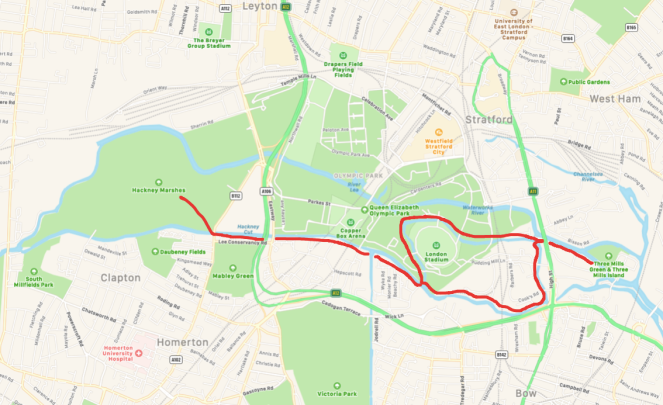
The first stop on my walk today is the House Mill, which is located along the River Lea in the London Borough of Newham. Built in 1776, it’s the world’s largest surviving tidal mill and is one of only four Grade I listed buildings in the borough. The House Mill is located on an island, which since the medieval period has been known as Three Mills. The Domesday Book recorded the easiest known mills there in 1086, while the foundations of the current House Mill date back to 1380-1420.
The main purpose of the mill was to provide flour for the local bakers of Stratford-atte-Bow who would sell their bread in the City of London. In the 18th century, the Mill became part of the Three Mills Distillery to produce gin to cater for the demand from the Gin Craze. One of the notable supply contracts the Mill had was the Royal Navy and as the company’s success grew, so did its operations. This growth saw it have its own carpenters, coopers and a large pig farm.

The House Mill we see today dates back to 1776 and was built on the site of an earlier mill between two houses, which is where the name derives from. In 1817, the iconic Clock Mill opposite it was rebuilt, while a third mill that was a windmill was there until 1840. During the early 19th century the distillery was owned by Conservative MP Phillip Metcalfe, before it was acquired by J&W Nicholson & Co in 1872, which produced Lamplighter Gin and established a network of freehouses.
Milling ceased in 1941 after the area was bombed during the Second World War, but the Clock Mill continued to operate until 1952. Today the House Mill offers a range of activities and events, including heritage tours, concerts, art exhibitions and classes.
There aren’t too many mills in London, so it’s really special to visit one on my walks. I do love the historical significance and architecture of a mill, it does have that old-time feel about it and you get a sense of how industrially important they were at the time. It’s shame we don’t see many mills, but I guess as technology has advanced over the years with the creation of electricity, these water powered mills get closed. But as they played such a huge part in the production of many industries in not just London, but the world, it’s crucial to maintain their presence.

I’ll now join the River Lea and make my way along its towpath to my next destination, the Queen Elizabeth Olympic Park in Stratford. The pleasant walk along the river is quite unique as the actual stretch of water is very quiet, with hardly anyone in the area. However, either side of the river you have a main road and on the other a railway line, so the river is kind of placed in between them. You get to see many cute boats, bridges and creative art while you take the trip along the river.
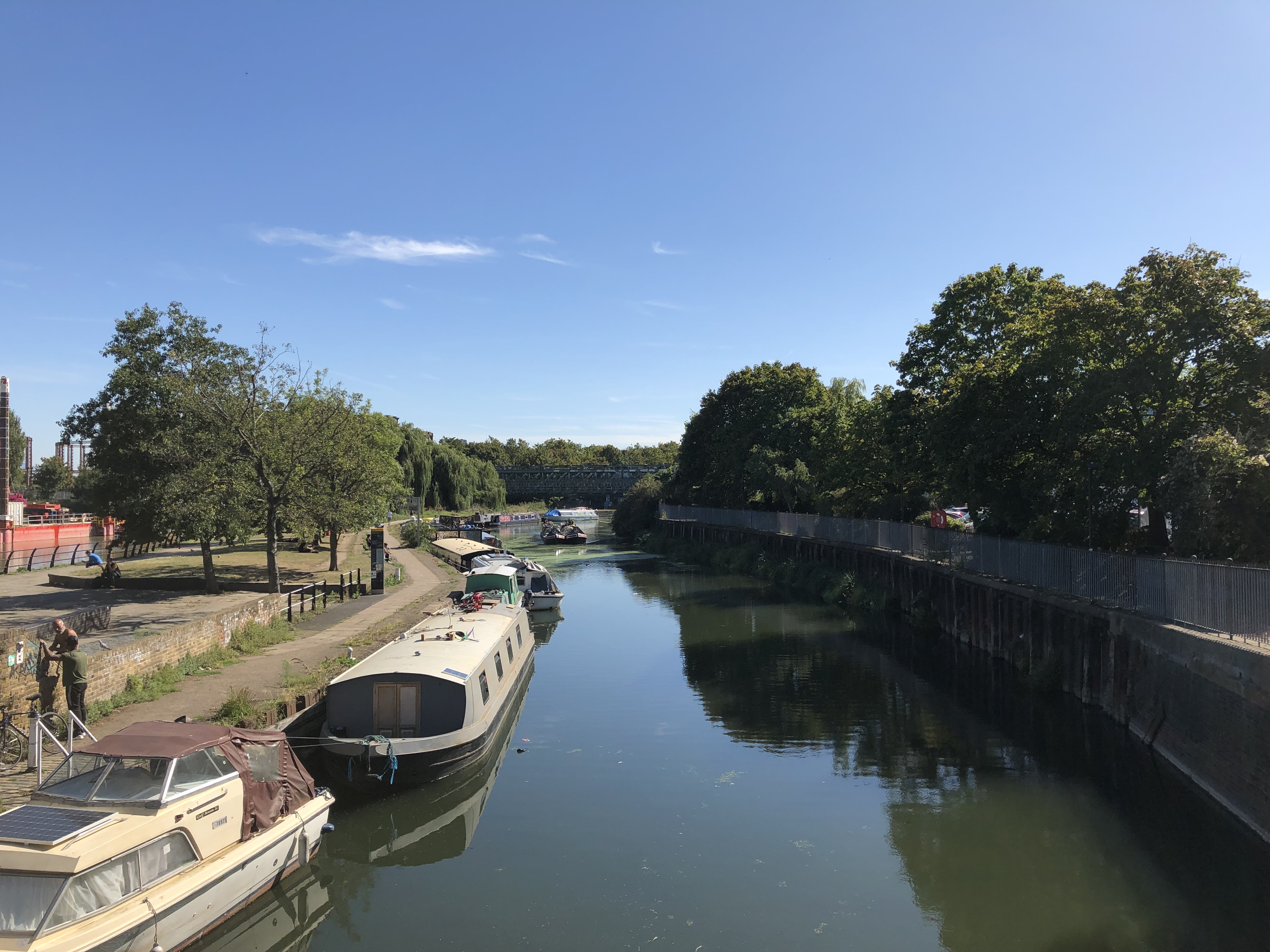




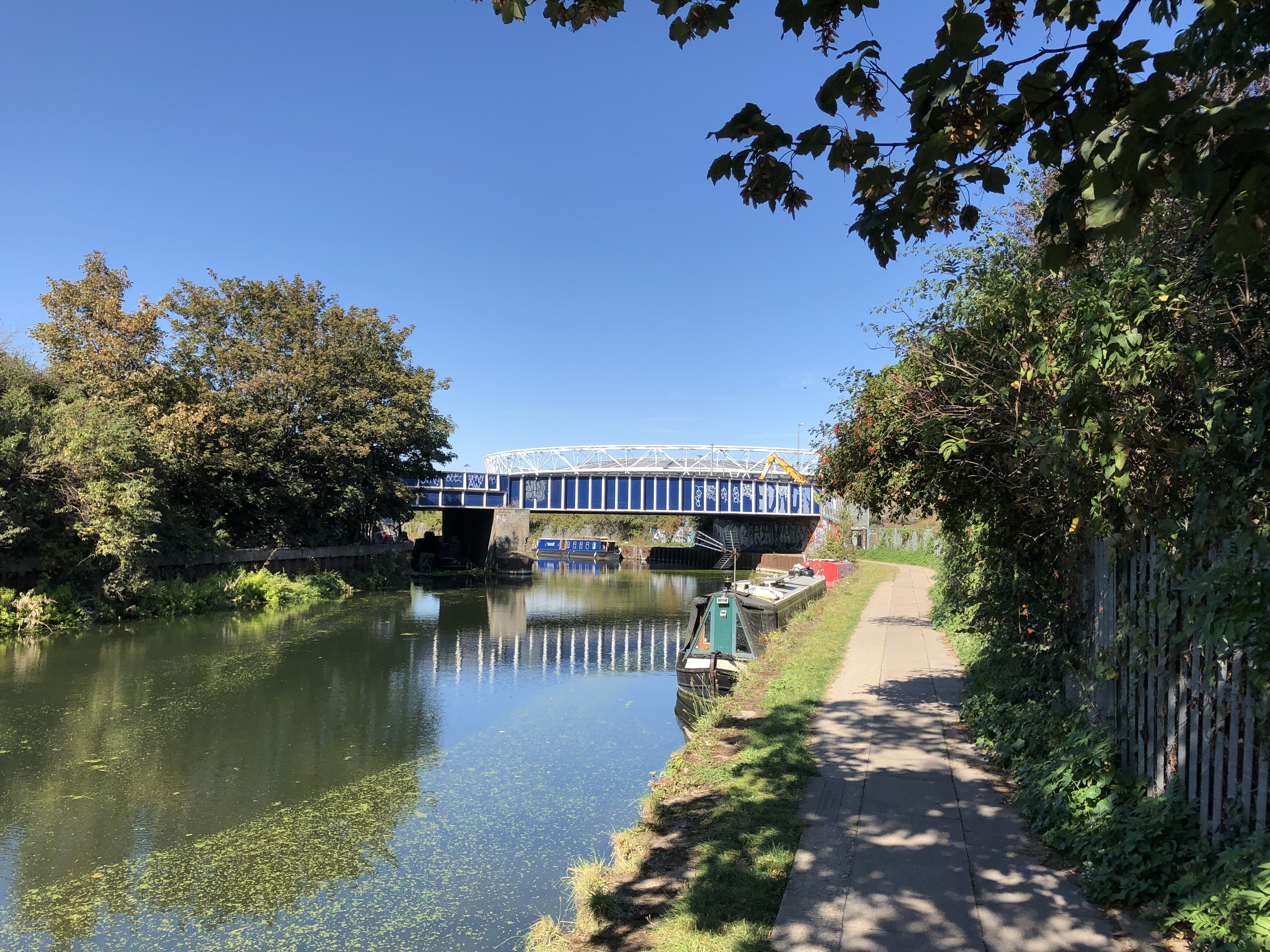
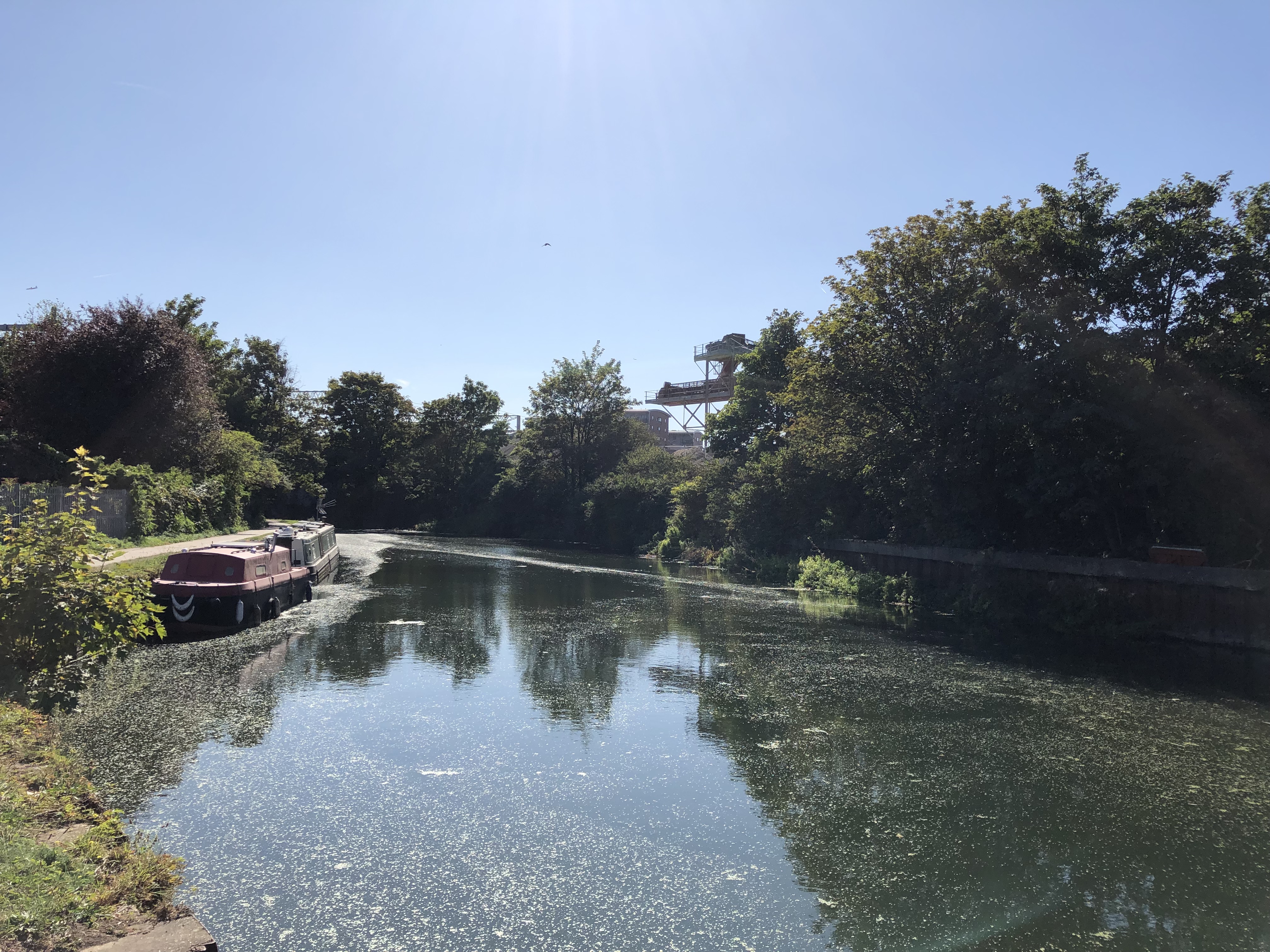

Just outside the Queen Elizabeth Olympic Park is the Old Ford Lock, which is a paired lock and weir on the River Lea Navigation. Located at Fish Island in Old Ford (an area in the London Borough of Tower Hamlets), the lock takes its name from the natural ford (a shallow place with good footing where a river or stream may be crossed by wading), which used to exist in the area crossing the uncanalised River Lea.
The Old Ford Lock marks the beginning of the Hackney Cut as it rejoins the River Lea Navigation at this point – below the lock, having travelled 2 miles (3.2 km) from the Middlesex Filter Beds Weir, just below Lea Bridge; and passing to the east of the River Lea Navigation.


Before the 1930s, this channel of water had tide gates installed to only permit boats to pass when the Lea Navigation and tidal Old River were the same. However, after the 1930 flood, work was undertaken on the Bow Back Rivers, the Carpenters Road and Marshgate Lane locks. In 2000, Bow Locks were modified to keep the tide out; this reduced silting in this section of the canal and made the water level completely controlled.
Did you know that the famous UK Channel 4 TV programme, The Big Breakfast, which aired between 1992 and 2002, was filmed on a location near the lock? To create the main house for the programme, three old neighbouring lock-keeper’s cottages were converted into a single house. The houses have since been purchased as part of the Olympic Stadium development plans.
One aspect I do enjoy about walking along rivers is the locks you find, there’s something very special about them, as they always look very picturesque. In addition to the importance of a lock, the whole system of managing the water looks both impressive and complex, which might add to the uniqueness of them.
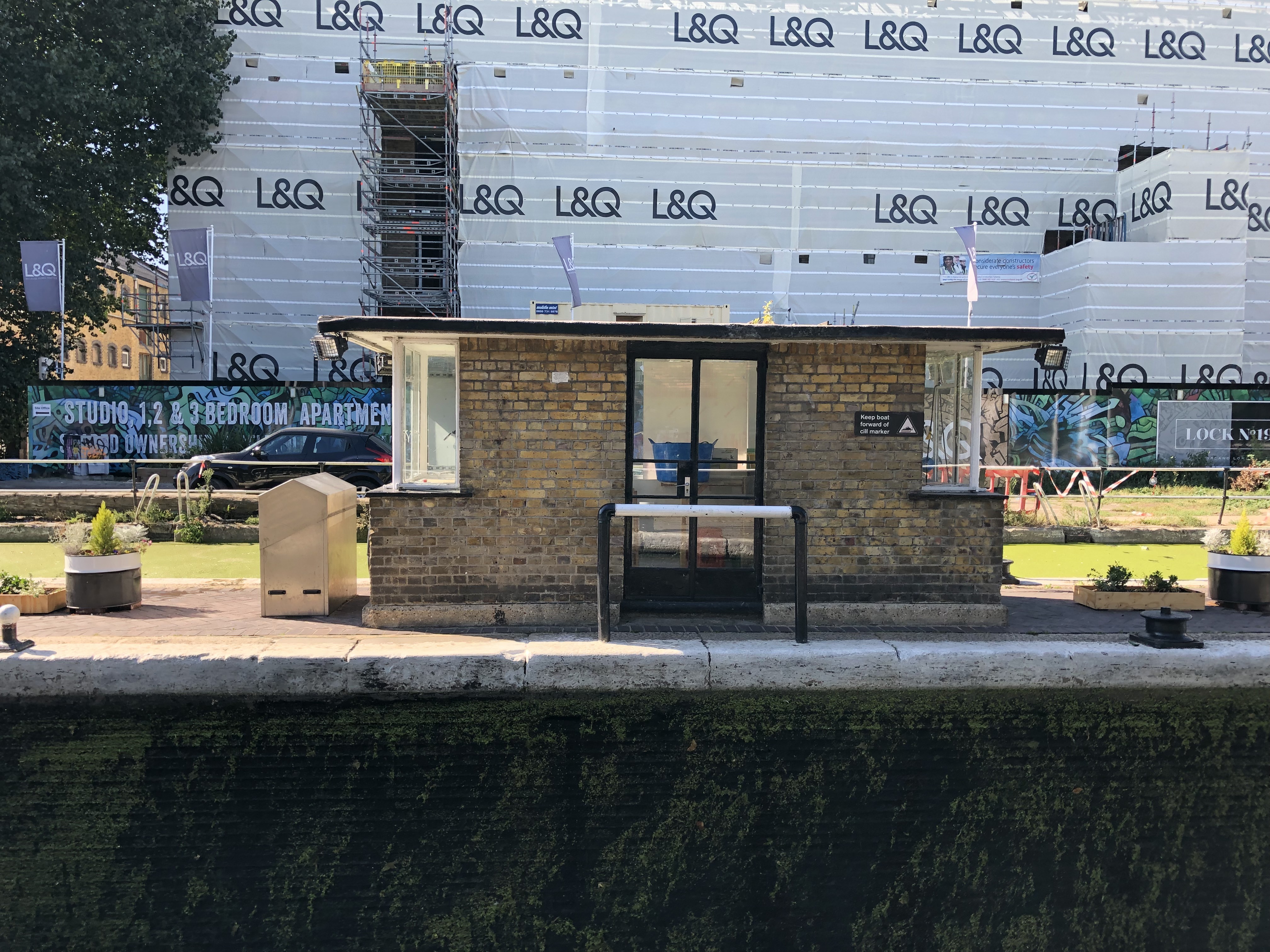

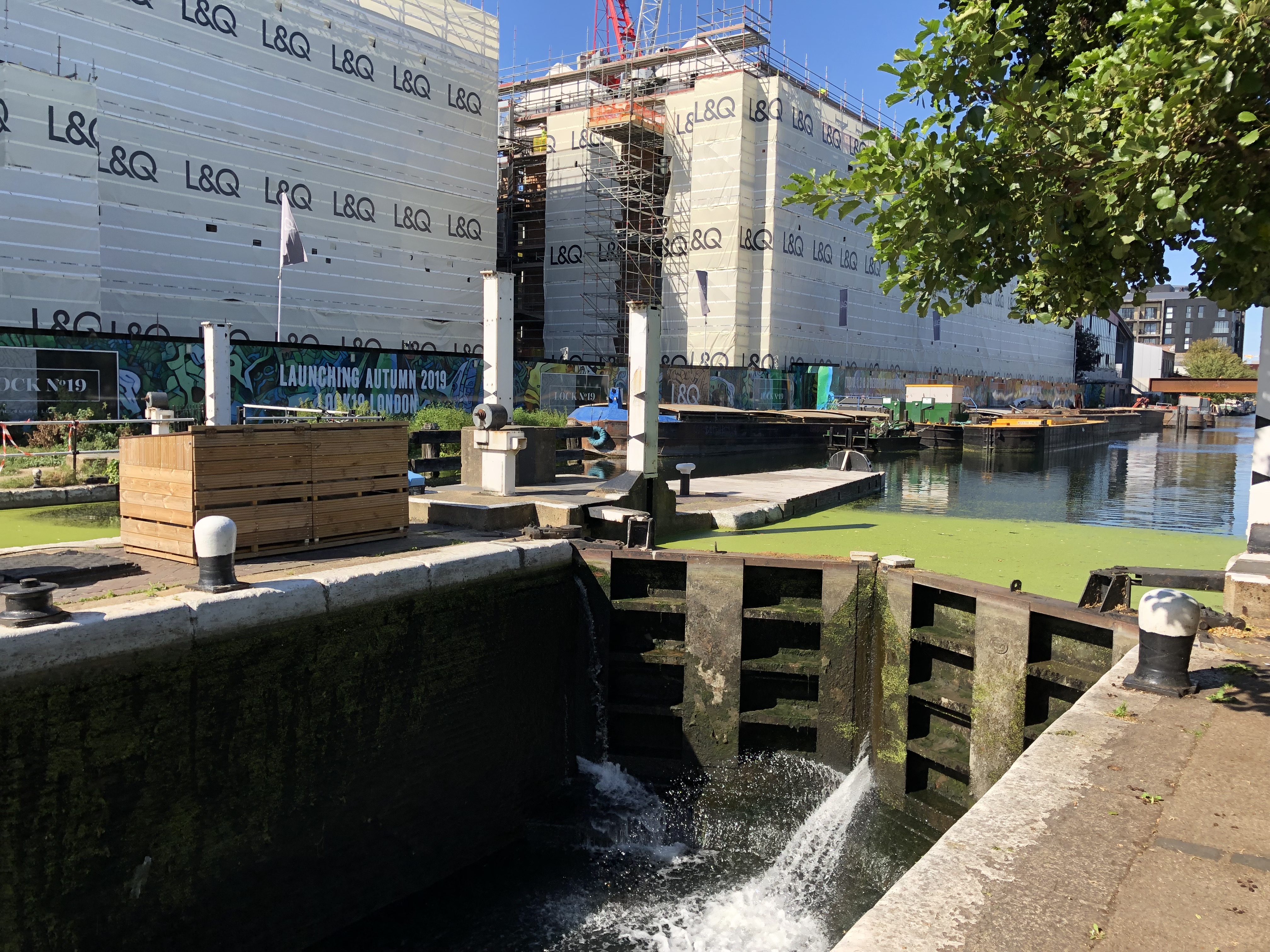

Walking along the river takes me to the Queen Elizabeth Olympic Park, with the eye-catching Olympic Stadium at the forefront of the area. Built on barren wasteland between 2008 and 2011 for the 2012 Summer Olympics and Paralympics, the park is located in Stratford. Costing £12 billion, it contains the athletes’ Olympic Village and several of the sporting venues, including the London Stadium and London Aquatics Centre, besides the London Olympics Media Centre.
The entire park covers 560 acres (226.6 hectares), which is the equivalent of around 300 football pitches and bigger than Hyde Park! After the 2012 Olympics, the park, which is free to enter, was opened in two stages – the north of the park opened on 29 July 2013 and the south of the park on 5 April 2014. Since it opened, the park has attracted over 25 million visits to its parklands, venues and events. There are 6.5km of waterways, approximately 26 acres of woods with over 13,000 tress in the park, and over 60 species of bird and 250 species of insects.

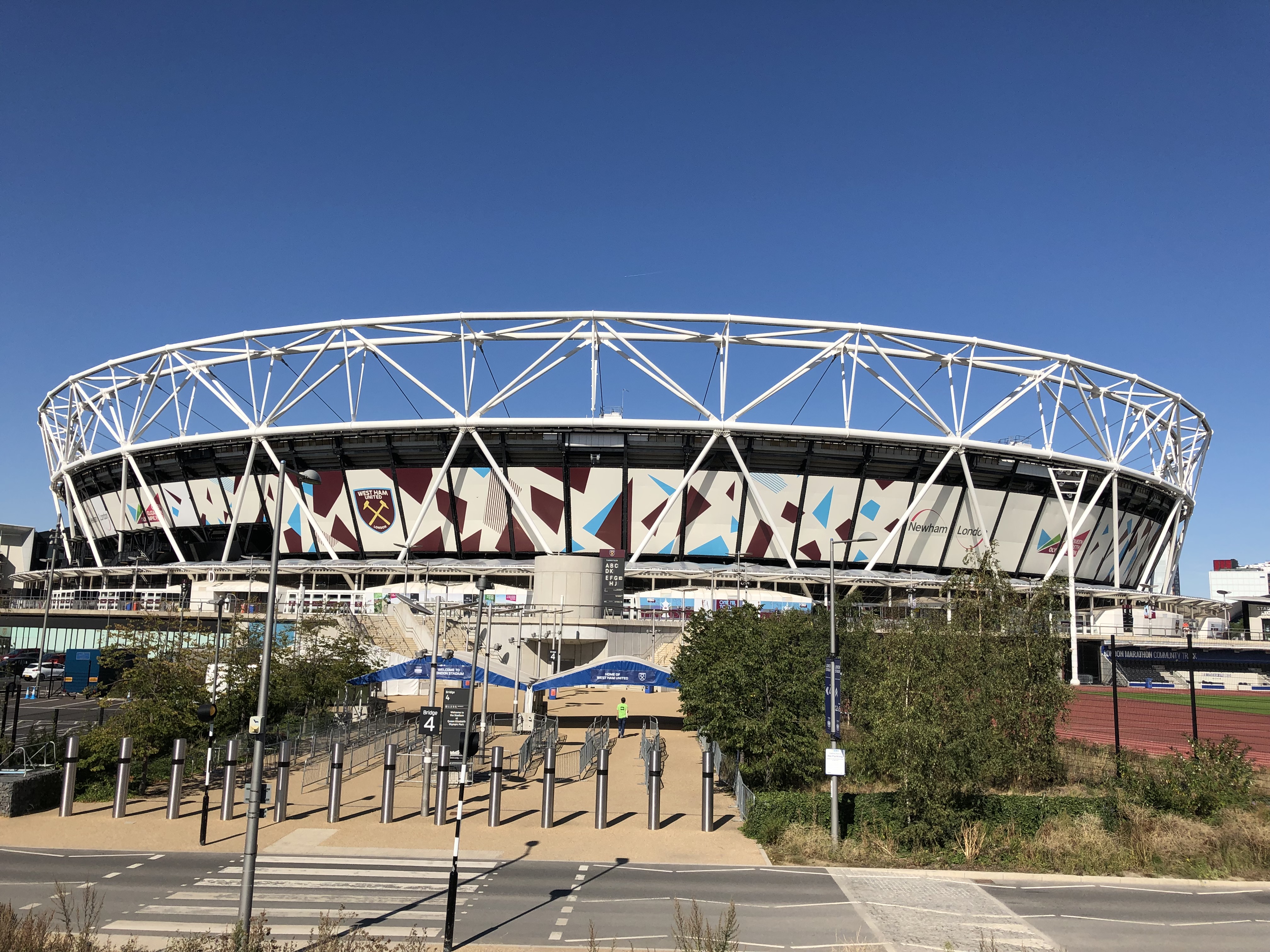
The park was designed by the EDAW Consortium, working with Arup and WS Atkins. The landscaping of the park was done by LDA Design in conjunction with Hargreaves Associates. During the construction of the Olympic Park, over 80,000 workers were involved in the project.
At the centre of the park is the impressive Olympic Stadium or the London Stadium, which it’s now known as. Opened on 6 May 2012, the stadium was designed by architectural company Populous. The stadium was used for the 2012 Summer Olympics and Paralympics opening and closing ceremonies as well as the track and field events. For the Olympics it was an 80,000 seater stadium, however, in July 2016 it reopened as a 66,000 seater stadium. Following the Olympics and Paralympics, it has been the home to West Ham Utd Football Club since 2016, although in the terms of the lease it was reduced to a 60,000 seater stadium.
In addition to hosting the Olympics and being West Ham’s home ground, it hosted matches in the 2015 Rugby World Cup, Rugby League, the 2017 IAAF World Championships, baseball and has been the home to the Anniversary Games since 2013.
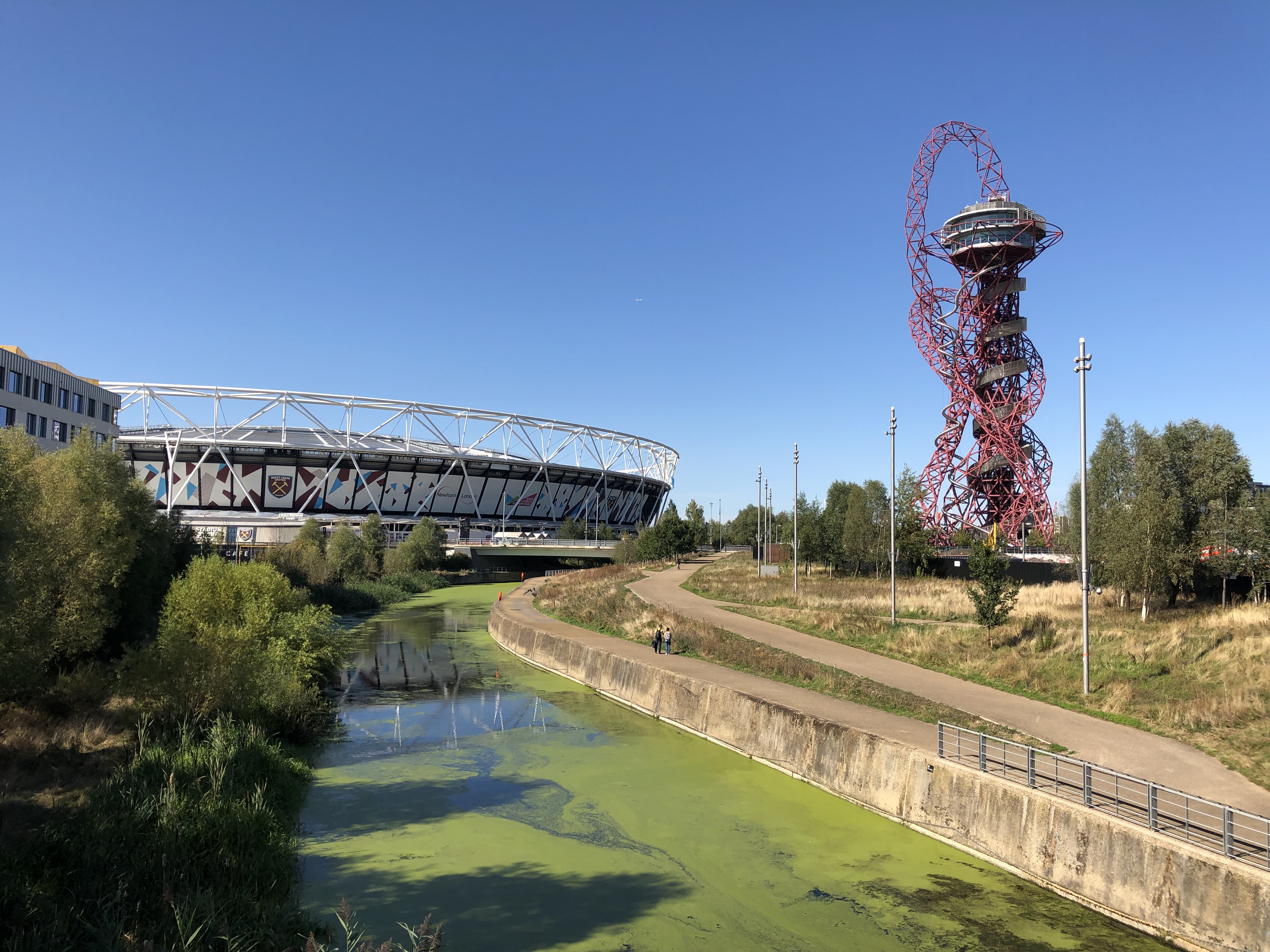

It’s not just the Olympic Stadium which is eye-catching, but the ArcelorMittal Orbit sculpture that stands next to it. Completed in 2012 and opened to the public in 2014, the 114.5 metre high observation tower is Britain’s largest piece of public art and a lasting legacy of the Olympics. Designed by Turner-Prize winning artist Sir Anish Kapoor and Cecil Balmond of Arup Group, it’s home to the world’s tallest and longest (178 metres) tunnel slide, which was designed by Carsten Holler. The name ‘Orbit’ describes a continuous action, a creative representation of the “extraordinary physical and emotional effort” that Olympians undertake in their continuous drive to do better. While ‘Arcelor Mittal’ were the developers of the sculpture.

For me walking past the Olympic Stadium brings back so many wonderful memories from the 2012 Olympics and Paralympics, and what an incredibly spectacular event it was. Maybe it was because Great Britain did so well during the games, or that the Olympics were deemed such a success, but you do feel quite proud when you look back at that amazing summer.
I’ll now leave the Olympic Stadium and take the picturesque river walk onto my final stop on today’s walk, the Hackney Marshes.

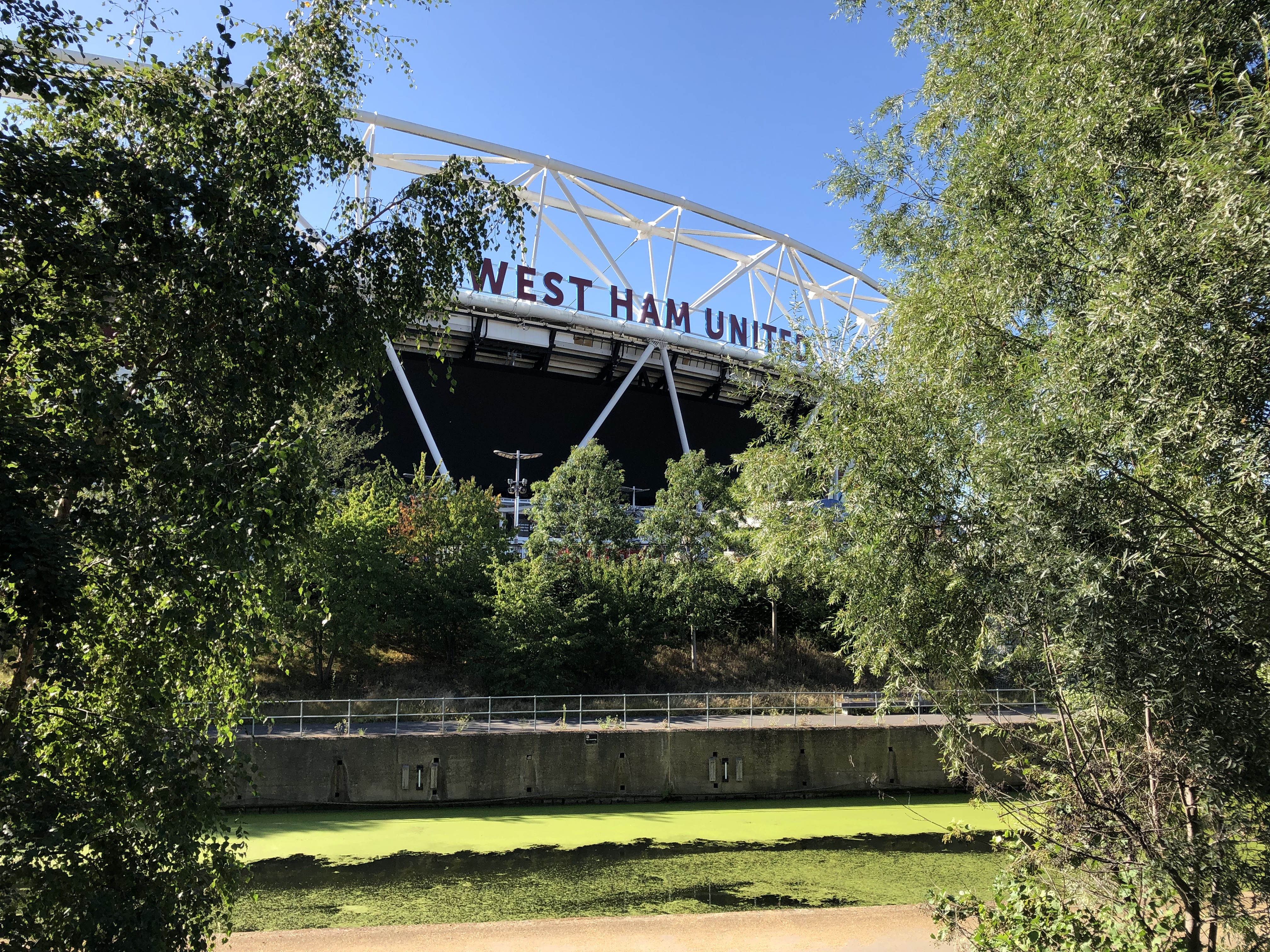

Before I join the Hackney Cut I’ll pass by the futuristic looking Carpenters Road Lock. Located on the Bow Back Rivers, which consists of several waterways running through Stratford and East London, the Lock was constructed in 1934. The reason for its construction was because of heavy rain in Hertfordshire sending surges of water down the River Lea, which would lead to rising tides.
Between 1960 and 1969, the Lock went into disrepair with silt filling up the lock chamber. However, the Olympic Stadium construction saw the Lock redeveloped with the installation of the Diamond Bridge. In 2016, the Lock was drained with new gates and lifting gears manufactured for it. The development was completed in 2017 and has the honour of being the only lock in Britain with rising radical gates at both ends.

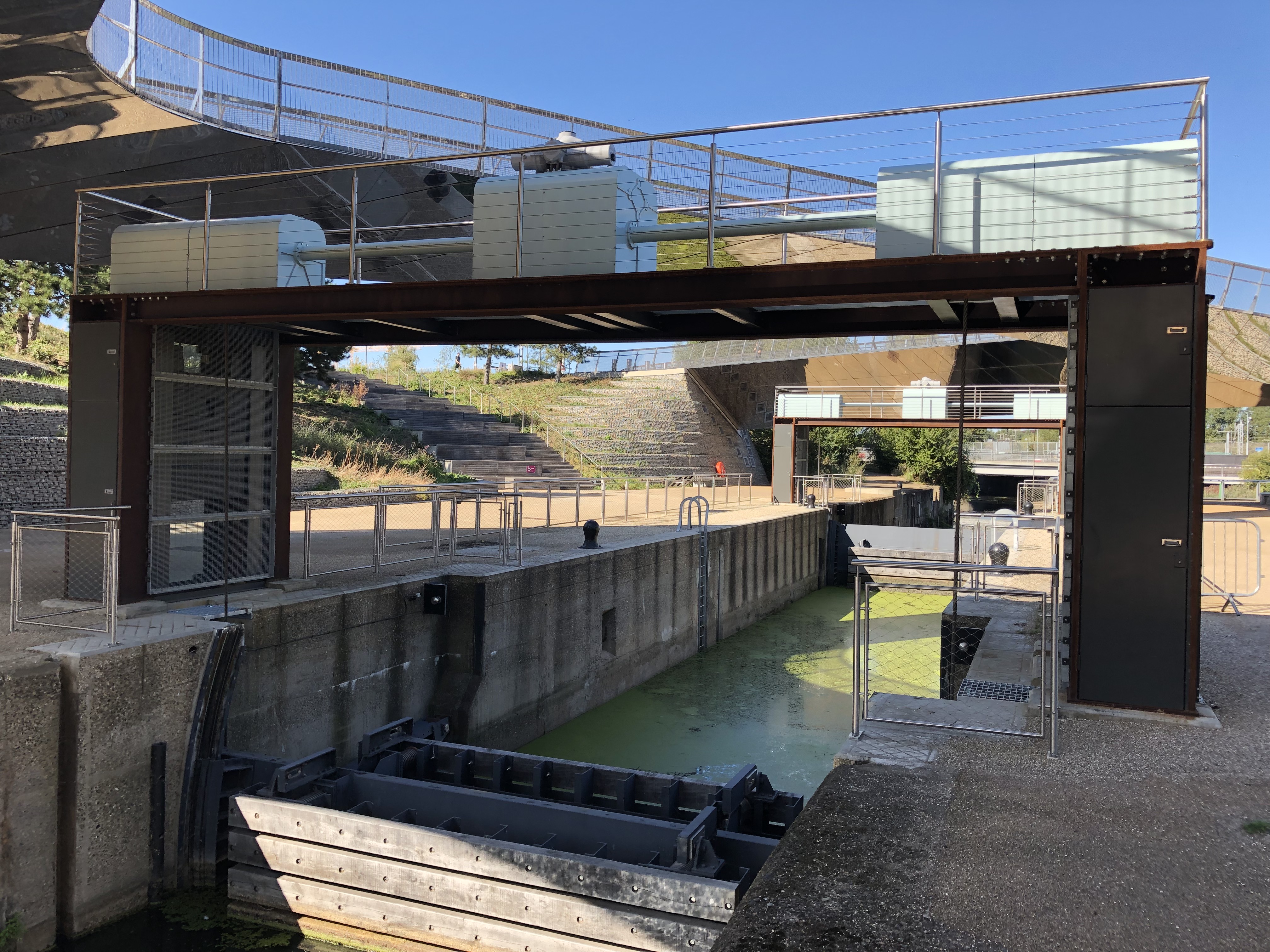


One aspect of my London walks that always surprises me is the quirky and cool bridges I walk over, and this blue one certainly fell into that category.


The contrast between the loud stadium and the calm, quiet riverside walk couldn’t be more huge when you walk by it!

To rejoin the river to get to the Hackney Marshes, I’ll walk past the Old Ford Lock again.
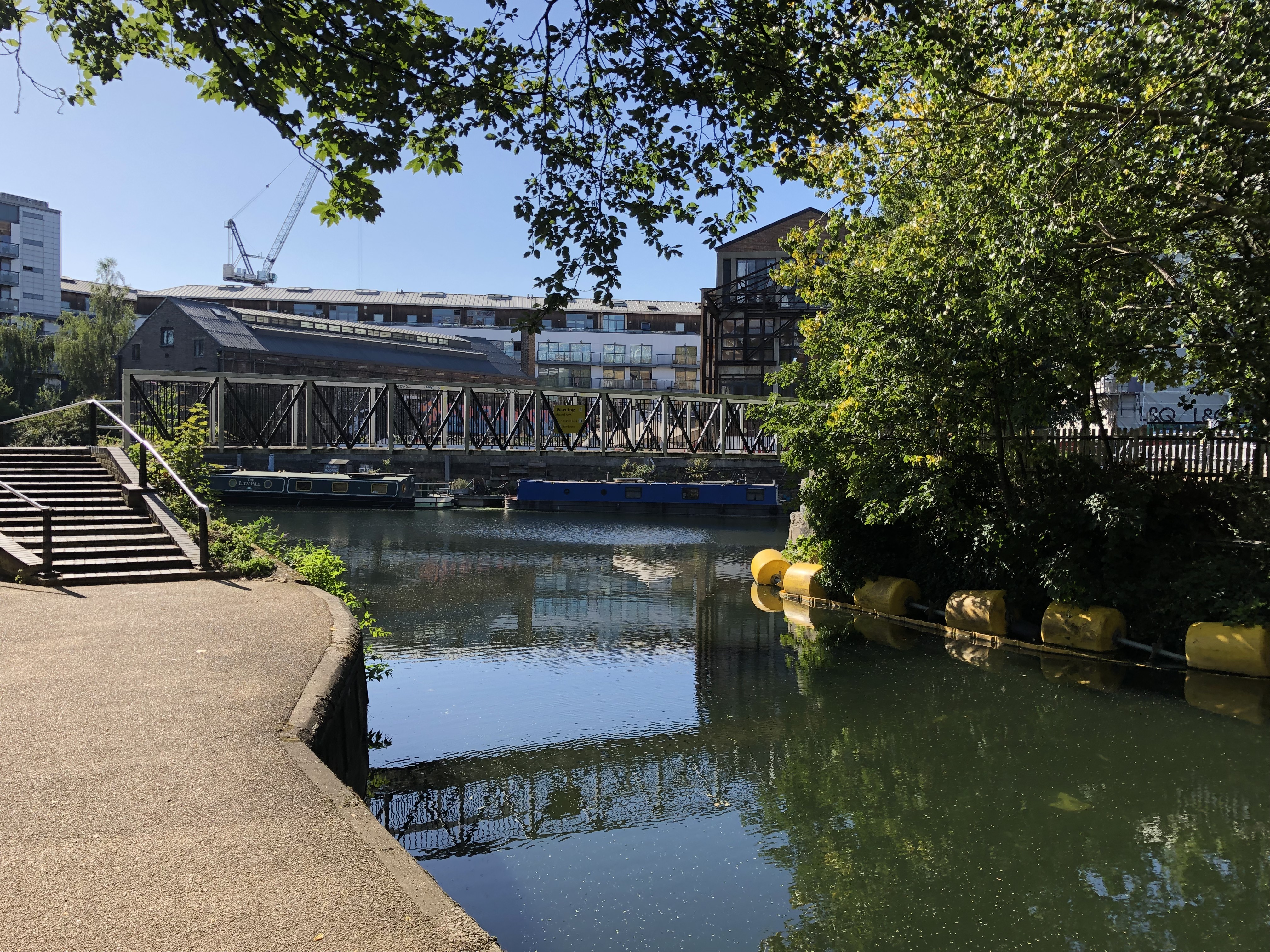
The river to get to the Hackney Marshes is known as the Hackney Cut, which is an artificial channel of the River Lea Navigation built in 1769 by the River Lea Trustees to strengthen and improve the Navigation. Strolling along this stretch of the river sees you pass under a couple more quirky bridges with trees on your right and residential houses to your left. A turning takes you to Hackney Marshes!




Hackney Marshes is an open space area situated in the Lower Lea Valley, lying on the western bank of the River Lea. The name derives from its position on the eastern boundary of Hackney and from its origin as an area of true marshland. In the 12th century the area was Lammas Land divided into marshy meadows. By the end of the 18th century these amounted to nearly 300 small strips, with the remainder of the land owned by the Lord of Hackney Manor. The London County Council acquired the land under the Open Spaces Act 1893, and since 1894 it has been a public open space. It’s one of the largest areas of common land in Greater London, with 336.1 acres (136.01 hectares) of protected common.
One of the iconic features of the Hackney Marshes is its association with sport! Back in 1881 men from Homerton College formed the Glyn Cricket Club, and to stay fit in the winer, they formed a football section too. This became known as the famous Clapton Orient Football Club, which in 1946 would be renamed Leyton Orient. But perhaps the most famous use of the Hackney Marshes is for Sunday league football. On a typical Sunday over 100 matches are played by amateur teams in several local leagues. However, back in the 1950s and 1960s, there were 120 full-sized pitches bringing over 2,500 local footballers every Sunday. One can only imagine the buzzing atmosphere on a match day, although on my walk I was there in more of a peaceful time, with rugby posts up instead!




It’s not just the playing fields, but the area is home to a pretty lake and woodland area too, which makes it the perfect place to end my walk.

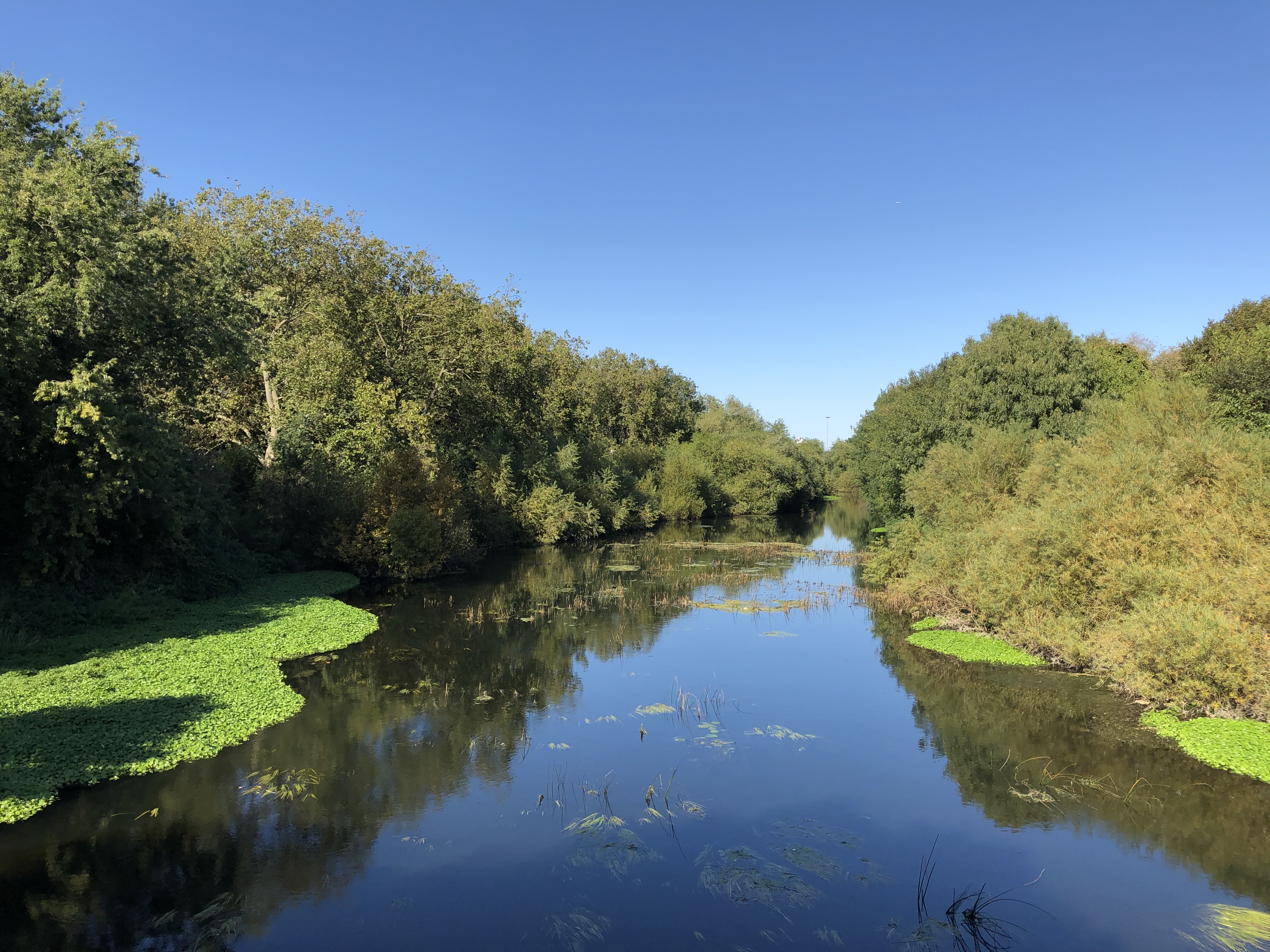
My East London expeditions on this edition of the London Wlogger have seen me step back in time to one of the world’s oldest mills – The House Mill – and taken me to one of the largest common lands in London – The Hackney Marshes – via an area of modern, architectural brilliance in the shape of the Queen Elizabeth Olympic Park. Hope you’ve enjoyed joining me on this walk and please share your thoughts and memories in the comments section below, I’d love to hear them!
Thanks for reading and in the meantime you can follow all my walks on Facebook, Twitter and Instagram, and don’t forget to sign up to my blog too so you don’t miss a post! Also why not have a read of my other walks which explore all over London, from north to south, to west to east via central, there’s something there for you! 🙂 And don’t forget to read my very special walk of San Francisco! Here are the links to them all below for you!
King’s Cross to Hampstead Heath
Leadenhall Market to Old Spitalfields Market
St Paul’s Cathedral to Moorgate
Mile End Park to London Fields
Hyde Park Corner to Italian Gardens
Clapham Common to The Albert Bridge
Grosvenor Gardens to Knightsbridge
Holland Park to Meanwhile Gardens
Hackney Downs to Springfield Park
Ravenscourt Park to Wormwood Scrubs
Covent Garden to Southwark Bridge
Putney Bridge to Barnes Common
Westminster Abbey to Vauxhall Bridge
Crystal Palace Park to Dulwich Wood
Clapham Junction to Battersea Bridge
Norbury Park to Tooting Commons
Lesnes Abbey Woods to the Thames Barrier
Richmond Green to Wimbledon Common
Gladstone Park to Fryent Country Park
Whitehall to Piccadilly Circus
Tower of London to the Limehouse Basin
Ham Common to Hampton Court Bridge
Sources:
All photos taken by London Wlogger © Copyright 2019
Information about The House Mill
Information about the Old Ford Lock
Information about the Queen Elizabeth Olympic Park

Ok, wow! Long walk and interesting, how long did you walk? 10miles, or is it all close together?
LikeLiked by 1 person
Thank you so much, glad you enjoyed it 🙂 The walk took about an hour and a half, which was about 6 miles!
LikeLiked by 1 person
Great walk, were checking out some of your other walks too
LikeLiked by 1 person
Marvellous, there’s a walk there for everyone!
LikeLiked by 1 person
Greetings from Pennsylvania, USA. Your walks are good ones! By the way, before I looked at this article, I’d never heard of the River Lea. Take care.
Neil Scheinin
LikeLiked by 1 person
Hello Pennsylvania from London! Thank you so much 😊 It’s the lesser-known river in London, the River Thames gets all the glory!
LikeLiked by 1 person
I thoroughly enjoyed the tour Thankyou such a great tour gyide
LikeLiked by 1 person
Aww thank you so much, glad to hear 😊
LikeLiked by 1 person
Loved your pictures and description of your walk. How clean is that waterway.
LikeLiked by 1 person
Thank you so much! ☺️ Yeah the waterways by the locks are very clean, not so clean by the stadium with the algae in the river!
LikeLiked by 1 person
Just wondering how nice it would be to kayak there.
LikeLiked by 1 person
It would give you a unique perspective of the rivers beauty 😃
LikeLiked by 1 person
I’m always intrigued by locks and the engineering that makes them work.
LikeLiked by 1 person
They’re all so clever how they work, quite a breakthrough in river management!
LikeLiked by 1 person
Waiting to visit after reading this article. Good writing i has lot of Informations. I’m also an author if you like please check my latest article https://www.travelvagrants.com
LikeLiked by 1 person
Glad to hear you enjoyed it! Lovely blog, lots of great tips 🙂
LikeLiked by 1 person
Thank you very much 👍👍👍🙏🙏
LikeLiked by 1 person
Thanks for dropping by and following 🌺 interesting reading this latest walk knowing some of it from time spent
in Stoke Newington
LikeLiked by 1 person
You’re very welcome! Glad I could enlighten you 😃
LikeLike
Wow! Great photos, I like to look at London without being there!!
LikeLiked by 1 person
Thank you so much, hopefully you can visit soon!
LikeLiked by 1 person
My London days are over for the most part, woodland and no shops, that’s my bag now!!
LikeLiked by 1 person
Hopefully my blog will give you a dose of London 😊
LikeLiked by 1 person
That’s fine by me!!
LikeLiked by 1 person